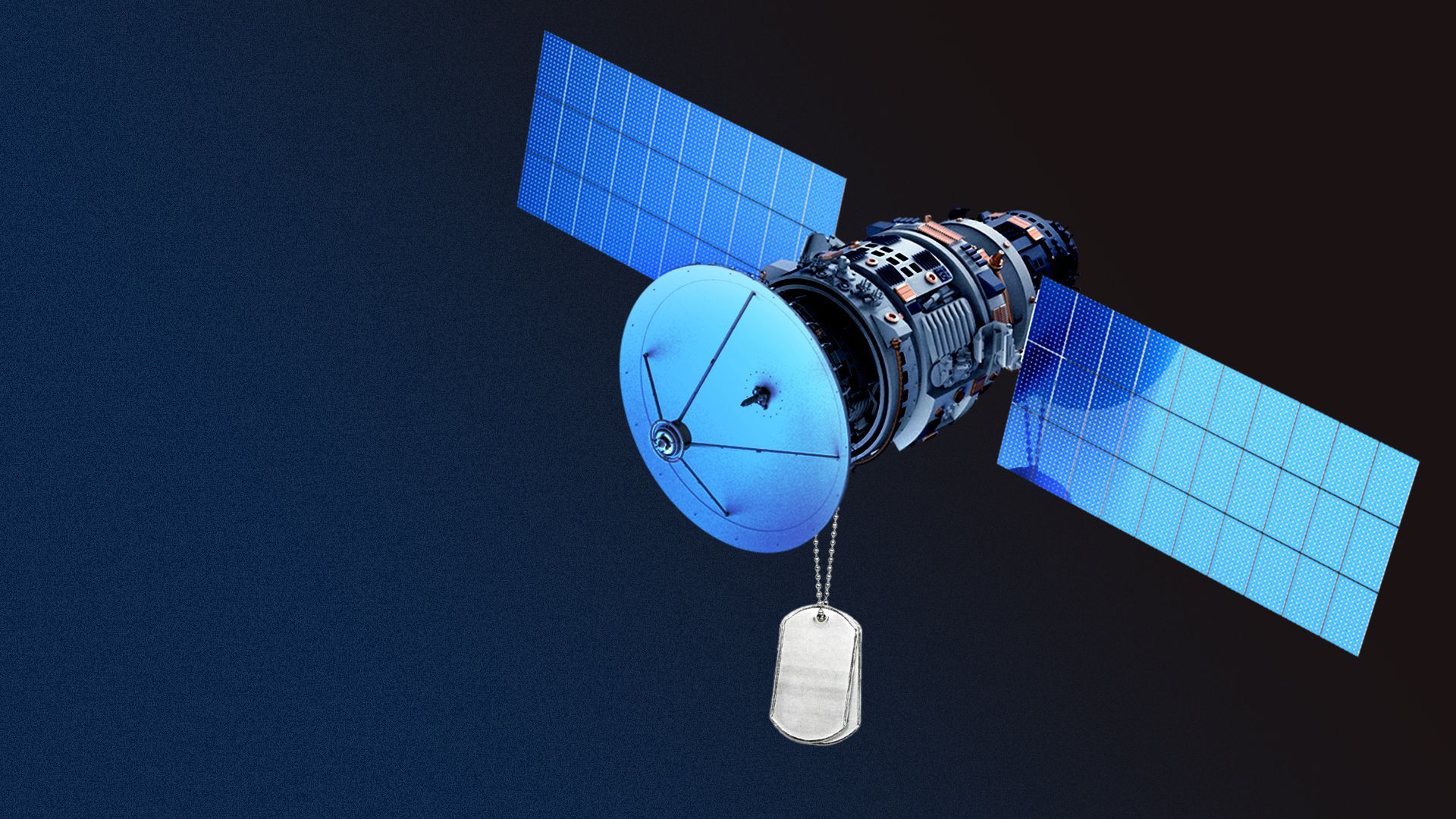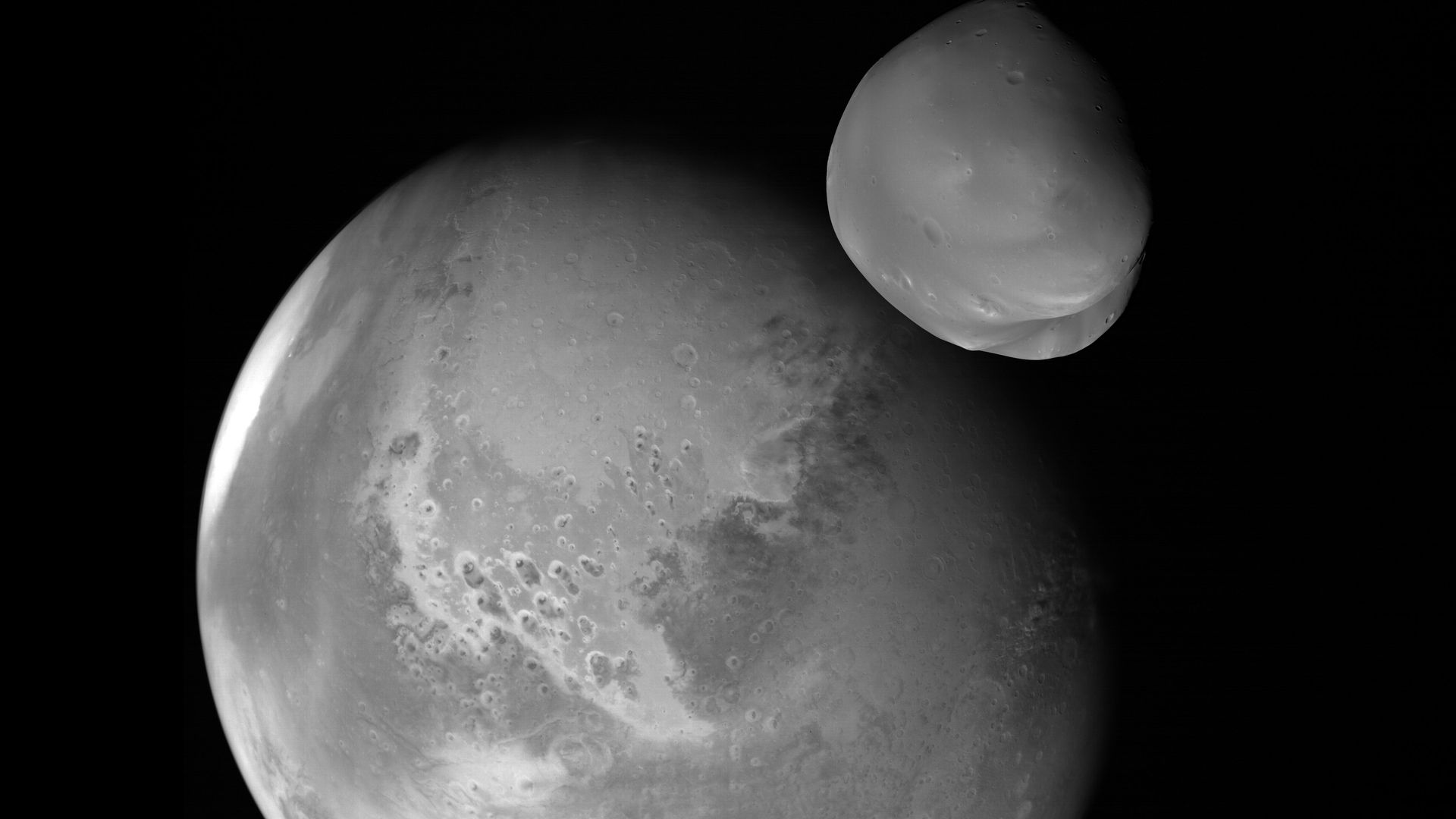| | | | | | | | | | | Axios Space | | By Miriam Kramer · Apr 25, 2023 | | Thanks for reading Axios Space. At 1,316 words, this newsletter is a 5-minute read. - Please send your tips, questions and lunar landers to miriam.kramer@axios.com, or if you received this as an email, just hit reply.
| | | | | | 1 big thing: Finding the money in space science |  | | | Illustration: Aïda Amer/Axios | | | | Private companies think there's money to be made in the solar system, and they're using scientific missions to figure out how. Why it matters: Historically, missions to other worlds — like Mars, Venus and the Moon — have been the purview of governments. But with launch costs coming down and space technology, in general, getting cheaper and easier to develop, companies are joining the fold. - In recent years, NASA has transformed how it does business by contracting with private companies to fly missions to space.
- Today, however, companies are trying to stretch their reach further, aiming to send private science missions to distant worlds.
- The space industry is now worth $464 billion, with some predicting that it could reach $1 trillion in revenue by 2040. Part of that growth will likely rely on commercial companies pushing to other and more distant destinations.
Driving the news: Rocket Lab is working to develop and build a mission to Venus to learn more about the chronically understudied planet and possibly search for signs of life in its cloud tops. That mission is expected to launch no sooner than 2025. - The small rocket company is also helping to craft a Mars mission — expected to launch next year — using two of its Photon satellites.
- The company Impulse Space is planning to launch and land the first commercial lander on Mars with the rocket company Relativity Space in 2026.
The big picture: While these companies are interested in science, their leaders freely admit that part of their ambitions behind these missions is focused on making money. - Rocket Lab's Peter Beck sees the company's interplanetary missions as an investment in a long-term plan to send a series of missions to scientifically intriguing targets. By flying a large number of missions, researchers will have a chance to send more instruments to deep space and the company will have a chance to build on subsequent successes, selling more missions.
- Impulse Space plans to talk with multiple governments about what kinds of science instruments they would want to fly to Mars as well as other commercial companies about flying their payloads to the Red Planet.
- Even just having a company's branding on Mars could be a huge selling point. Impulse Space COO Barry Matsumori cheekily said during a panel on private sector scientific exploration at the National Space Symposium: "[W]e will allow stickers to be on our lander."
Between the lines: NASA, for its part, is watching all of this commercial development very closely. - The space agency has already given out contracts to several companies willing to fly NASA payloads to the lunar surface.
- "I think depending on how that goes, we have potential to run that same type of experiment with other planetary destinations," NASA chief economist Alexander MacDonald said at the Space Symposium last week.
Yes, but: The market for this kind of scientific development is still speculative at best, and the commercial market for any interplanetary activity still isn't proven. - It also takes years to create, test and fly new technologies in order to make these missions — and eventually the markets for them — a reality.
|     | | | | | | 2. ispace fails to soft-land on the Moon |  | | | Illustration: Natalie Peeples/Axios | | | | Japan's ispace lost communication with its Moon lander during the company's attempt to become the first to successfully land a privately built spacecraft on the lunar surface today. Why it matters: The landing is presumed to have failed. Multiple private companies are aiming for the Moon as international attention turns to it. Today's unsuccessful landing attempt shows just how difficult it still is to land there. What's happening: The uncrewed spacecraft was expected to land on the surface of the Moon at about 12:40pm ET, but the team couldn't establish contact with the lander. - "We already confirmed that we have established the communication until the very end of the landing. However, now we lost the communication, so we have to assume we could not complete the landing on the lunar surface," Takeshi Hakamada, ispace CEO, said during the webcast of the landing attempt.
- The cause of the failure wasn't immediately clear.
- Among other cargo for customers, the lander carried the first Moon rover for the United Arab Emirates. The mission launched last year atop a SpaceX Falcon 9 rocket.
Background: Ispace's Team Hakuto competed in the Google Lunar XPRIZE competition to land privately built spacecraft on the Moon. The competition ended without a winner in 2018, but some of the companies have continued their work. - One of those companies, Israel's SpaceIL, attempted to land a lander — called Beresheet — on the Moon in 2019. But the lander crashed into the lunar surface.
- U.S.-based companies Astrobotic and Intuitive Machines are expected to launch their own landers to the Moon as soon as this year.
What to watch: NASA's successful launch of the Artemis I mission around the Moon last year showed that there will likely be at least one customer looking for services to buy on and around the Moon. - The space agency plans to launch its first crewed mission to the lunar surface under the Artemis program in 2025.
|     | | | | | | 3. Who gets to be an astronaut? |  | | | Illustration: Aïda Amer/Axios | | | | The director general of the European Space Agency, Josef Aschbacher, told Axios he wants to see other space agencies consider accepting people with disabilities into their astronaut corps. Why it matters: Most space agencies have stringent health and physical requirements for astronauts, limiting who can fly to space. But by expanding the definition of the "right stuff" needed to become an astronaut, spaceflight would become more inclusive, especially for people who historically have been told they can't fly to space. Driving the news: The European Space Agency last November announced the selection of its first "parastronaut" — John McFall, a British Paralympian whose right leg was amputated when he was 19. - "A physical handicap should not stop you from becoming an astronaut," Aschbacher told me at the National Space Symposium.
- "I hope when John McFall is flying that this is so visible and so clear, but that others are inspired as well," he added. "It's a very symbolic element of showing that space is not only for fighter pilots, but it's really for all kinds of people."
- McFall will now participate in a study to learn more about what kind of adjustments will need to be made to the capsule, space station and gear in order to make a future flight successful for him.
- NASA hasn't recently commented on or made any announcements about recruiting astronauts with disabilities.
The big picture: The rise of private spaceflight has also opened up opportunities to a wider array of people. - Hayley Arceneaux, one of the crew members who flew to space with the Inspiration4 mission in September 2021, is a childhood cancer survivor with a prosthesis in her leg. She likely wouldn't have had that opportunity if she had taken a more traditional, government-centered path to space.
What to watch: People with certain disabilities may even fare better in space than those who are considered able-bodied on Earth, experts have said. - For example, people who use wheelchairs for mobility might have an easier time spacewalking in microgravity and working in a spacesuit.
Go deeper: The new "Right Stuff" |     | | | | | | A message from Axios | | Share Axios Space and win | | |  | | | | With Axios Space, it's never been easier to stay up to speed with what matters in the cosmos. Share Axios Space with a friend and win Axios swag, from a tote bag perfect for a spring picnic, to a baseball cap meant for a day at the game. Start winning today. | | | | | | 4. Out of this world reading list |  | | | Illustration: Natalie Peeples/Axios | | | | 🛰 Space Force could benefit from commercial data to monitor satellites and debris (Sandra Erwin, SpaceNews) ☀️ Severe solar storm creates dazzling auroras farther south (Marcia Dunn, Associated Press) 🌌 Rocky planets might have been able to form in the early universe (Allison Gasparini, ScienceNews) 💥 SpaceX's Starship soars, then explodes in major test flight (Axios) |     | | | | | | 5. Weekly dose of awe: Hope sees Deimos |  | | | Photo: Emirates Mars Mission | | | | Mars and its small moon Deimos glow in this black and white photo taken by the United Arab Emirates' Hope probe. - Mission controllers back on Earth recently modified Hope's orbit to help the probe get a better view of Deimos. The spacecraft flew only 100 kilometers from the moon's surface during its closest approach.
- The orbiter arrived at Mars in February 2021 and has been beaming back information about the Red Planet since.
|     | | | | | | A message from Axios | | Share Axios Space and win | | |  | | | | With Axios Space, it's never been easier to stay up to speed with what matters in the cosmos. Share Axios Space with a friend and win Axios swag, from a tote bag perfect for a spring picnic, to a baseball cap meant for a day at the game. Start winning today. | | | | 👩🔬 Big thanks to Laurin-Whitney Gottbrath for editing, Sheryl Miller for copy editing, and the Axios visuals team. If this newsletter was forwarded to you, subscribe. |  | | Are you a fan of this email format? Your essential communications — to staff, clients and other stakeholders — can have the same style. Axios HQ, a powerful platform, will help you do it. | | | | | | Axios thanks our partners for supporting our newsletters.
Sponsorship has no influence on editorial content. Axios, 3100 Clarendon Blvd, Arlington VA 22201 | | | You received this email because you signed up for newsletters from Axios.
To stop receiving this newsletter, unsubscribe or manage your email preferences. | | | Was this email forwarded to you?
Sign up now to get Axios in your inbox. | | | | Follow Axios on social media:    | | | | | |
No comments